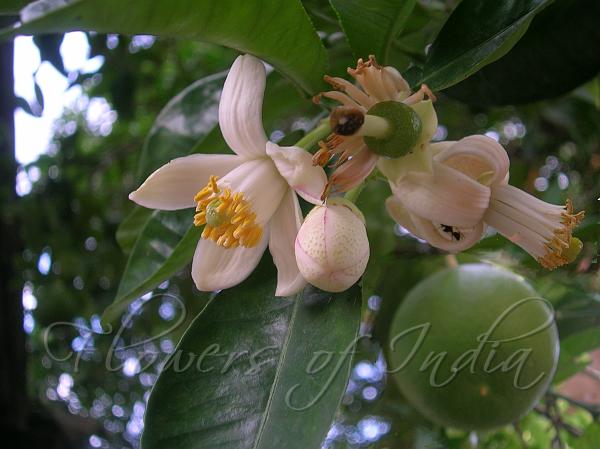|
| Pomelo |
|

|

| File size | 417867 |
| Original date | 5/17/07 4:50 PM |
| Resolution | 2048 x 1536 |
| Flash | Flash did not fire, auto |
| Focal length | 8.0mm |
| Exposure time | 1/36s |
| Aperture | 3.2 |
| Focus Distance | |
| Metering Mode | Partial |
| Camera make | NIKON |
| Camera model | E3700 |
| Sensor type |
|
|
|
|
Photo: |
Botanical name: Citrus grandis Family: Rutaceae (Lemon family)
Synonyms: Citrus costata, Citrus pompelmos, Citrus maxima
Synonyms: Citrus costata, Citrus pompelmos, Citrus maxima
The pomelo is a citrus fruit, usually a pale green
to yellow when ripe, larger than a grapefruit, with sweet flesh and
thick spongy rind. The largest citrus in the world, the pummelo can
reach 12" in diameter. The pummelo tree may be 16 to 50 ft tall, with a
somewhat crooked trunk 4 to 12 in thick, and low, irregular branches.
Some forms are distinctly dwarfed. The young branchlets are angular and
often densely hairy, and there are usually spines on the branchlets,
old limbs and trunk. Technically compound but appearing simple, having
one leaflet, the leaves are alternate, ovate, ovate-oblong, or
elliptic, 5-20 cm long, 2-12 cm wide, leathery, dull-green, glossy
above, dull and minutely hairy beneath. Leaves have a distinctly winged
stalk. The flowers are fragrant, borne singly or in clusters of 2 to 10
in the leaf axils, or sometimes 10 to 15 in terminal racemes 4 to 12 in
long; rachis and calyx hairy; the 4 to 5 petals, yellowish-white,
1.5-3.5 cm long, somewhat hairy on the outside and dotted with
yellow-green glands; stamens white, prominent, in bundles of 4 to 5,
anthers orange. The pomelo is native to Southeast Asia and all of
Malaysia, and grows wild on river banks in Fiji, Tonga, and Hawaii. It
may have been introduced into China around 100 B.C.
Pomelo is also known as a "shaddock," after an English sea captain,
Captain Shaddock, who introduced the seed to the West Indies in the
17th century from the Malay Archipelago.
| Identification credit: Pravin Kawale | Photographed in Imphal, Manipur. |
• Is this flower misidentified? If yes,